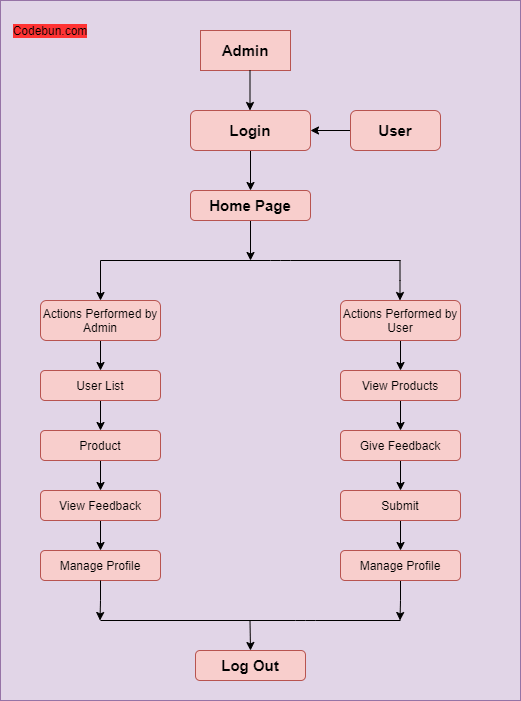UML diagrams for the Customer Feedback System. Following are the different UML diagrams like Components, Activity, Use Case, and Sequence diagrams of the Customer Feedback System.
Customers’ opinions and feedback matter while running a business. It helps you to understand the needs of customers and helps you to target the right audience. With the help of these diagrams, one can get a better understanding of the project.
UML Diagram for Customer Feedback System
We’ve compiled structural UML diagrams i.e. component diagrams, and three types of behavioural UML diagrams i.e. Activity, Sequence, and Use Case diagrams for the Customer Feedback System. We have also explained the data flow diagram (DFD) for this project.
Here, we have multi-user, who will be interacting with the system. With the help of these diagrams, one can get a better understanding of the project. This web application is developed to provide users with an online medium where they can users can share their feedback on different types of products/items. Admin is who will manage the overall application; whereas the user or customers can share feedback.
Component diagram for Customer Feedback System
The component diagram below shows the structural relations between components in a Customer Feedback System. The connected components by lines represent relationships within the systems. In the diagram, it can be seen that there are components namely product, order, customer, and account.
Admin will be responsible for maintaining the system and also, keeping a check on the products and management of the system, can add/remove/update products from lists, categorize products, check availability of products, etc. Admin can add orders. Admin can view order lists.

Activity diagram for Customer Feedback System
Activity diagrams in UML display the functionalities of various activities and flow in management processes and software systems. The flow in the activity diagram can be sequential, branched, or concurrent.
Admin can Add/Remove/Update any details related to the products like product name, category, and type of products, update prices of the products, and can categorize, and maintain product databases.
Admin will be responsible for managing the system. On the other hand, Customers can register themselves, log in using the login credentials, and view and give feedback on the products. Admin can just add products detail and customers can view them and give their valuable feedback.

Sequence diagram for Customer Feedback System
Sequence diagrams in UML are used to illustrate the sequence of messages between objects in an interaction. A sequence diagram consists of a group of objects that are represented by lifelines and the messages that they exchange overtime during the interaction.
Admin can View/Add/Remove products, manage feedback, customers, etc. Admin will be responsible to add products, viewing feedback, and reviews. Whereas Customers will review products and give their feedback. Customers can register themselves, log in using the login credentials, and view and give feedback on the products.

Use Case Diagram for Customer Feedback System
A UML use case diagram can create a broad, high-level view of the relationship between use cases, actors involved, and systems being performed.
As you can see from the examples below, use cases are represented by oval shapes, and the lines then show at which point an actor/user participates and interacts with their corresponding use case.
Admin will be able to access Product, User list, and View Feedback use cases whereas, user can give feedback, view products list, etc. Login, Logout, and My Profile use cases are accessible to both the user.

DFD Diagram for Customer Feedback System
A data flow diagram represents the flow of information for any process or system. It shows the system with its relationship to external entities.
After logging in, Admin will land on the home page where they can manage their profiles. Admin can add, view products, manage product lists, view feedback, manage user lists, etc. Admin can Add/Remove/Update products, manage products/product categories, details, and feedback, can manage users, etc.

